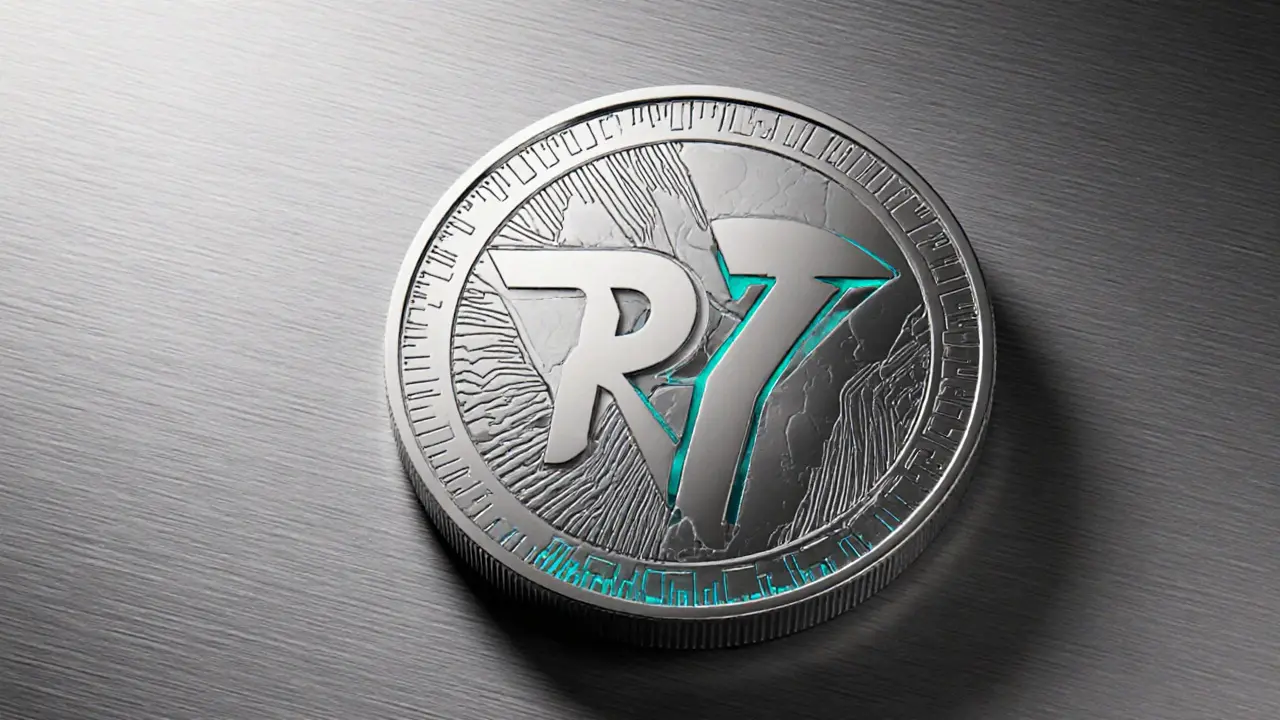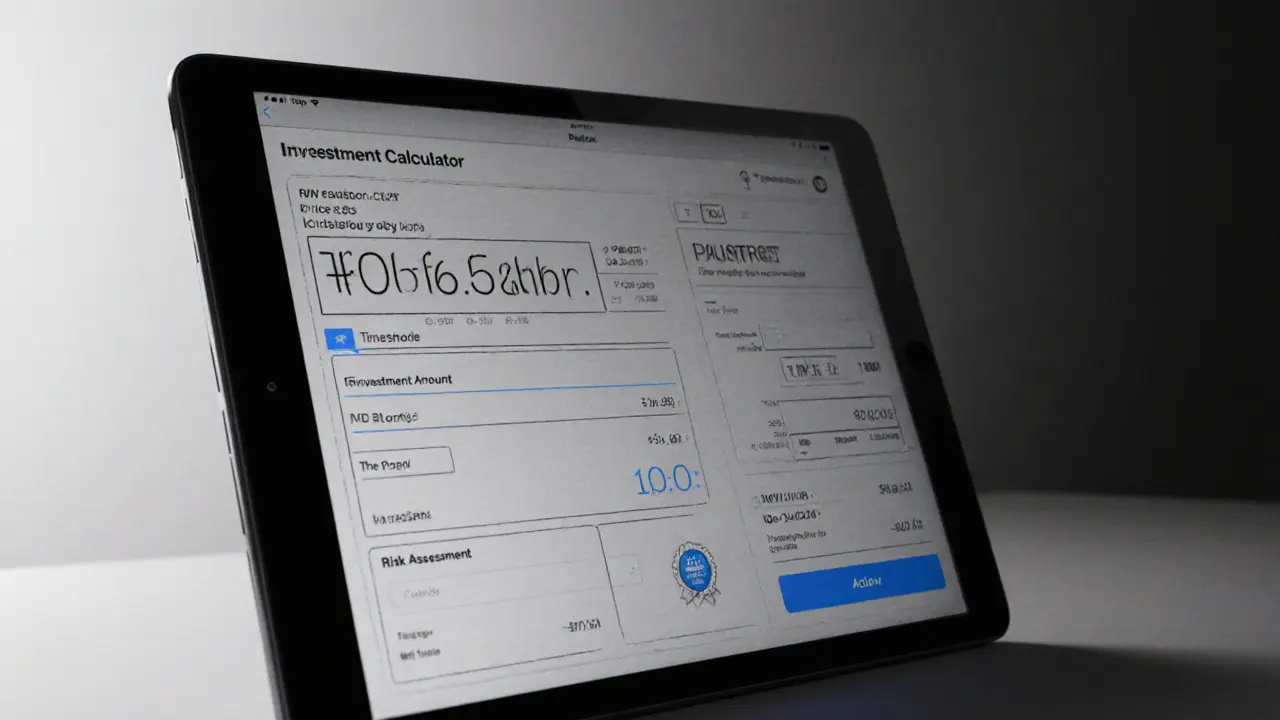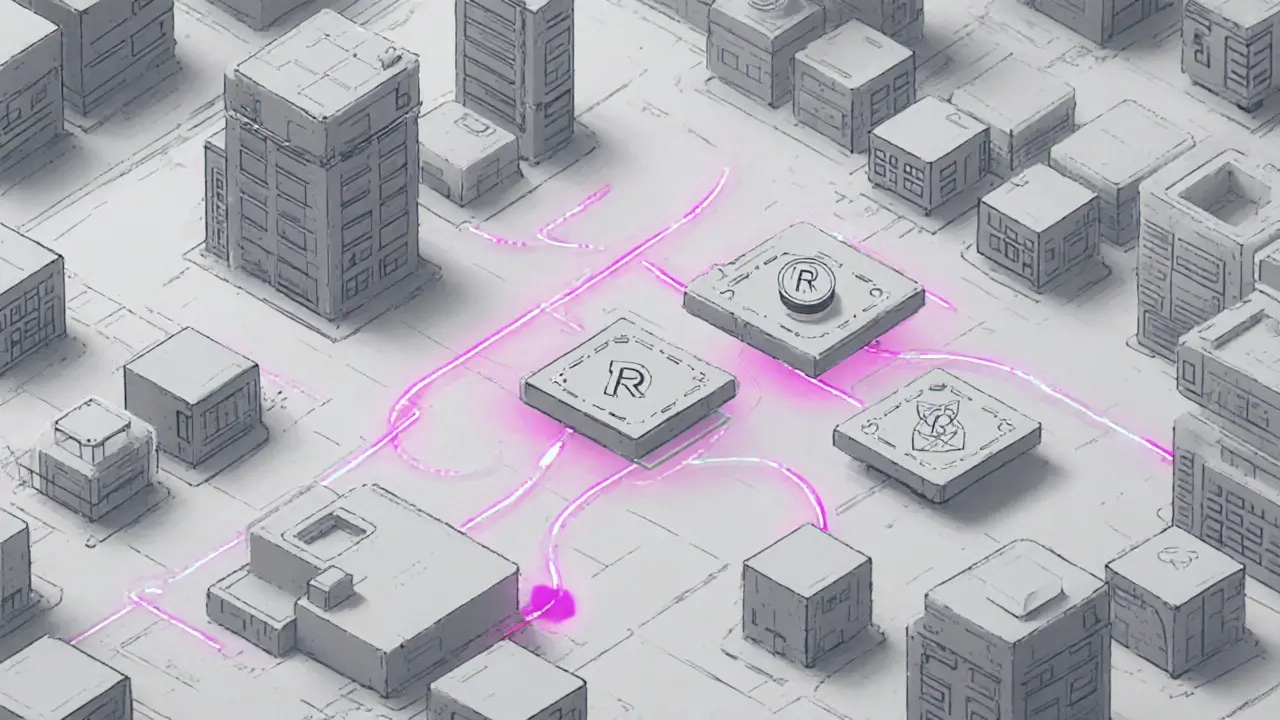RWT Token Explained: Solana‑Based Virtual Real Estate Crypto

RWT Token Investment Calculator
Current RWT Token Info
Price: $0.000009
Market Cap: $90,000
Total Supply: 1,000,000,000
24h Volume: $200,000
RSI (14-day): 82
Investment Parameters
Investment Results
Enter your investment parameters and click Calculate to see potential returns.
Risk Assessment
Based on current market data, RWT token presents a high-risk investment opportunity.
Ever wondered what the buzz around RWT token actually means? It’s a micro‑cap coin that tries to blend virtual land deals with fast, cheap Solana transactions. Below you’ll get a clear picture of who’s behind it, how it works, where you can find it, and what the risks look like.
Quick Facts
- Launched: June92024 on Solana
- Supply: ~1billion RWT (circulating = total)
- Current price (Oct2025): $0.000009USD (≈$9µ)
- Market cap: under $120K (micro‑cap)
- Focus: virtual real‑estate services in the Metaverse
What Is RWT Token?
RWT TOKEN (tickerRWT) is a Solana‑based cryptocurrency that markets itself as a gateway to virtual real‑estate investments. The project claims to be community‑owned, meaning token holders supposedly influence the direction of the platform. Its tagline talks about “decentralized WEB3 community forging our path forward,” but concrete governance rules are still vague.
How Does It Work on Solana?
Solana is known for processing over 65000 transactions per second with fees measured in fractions of a cent. RWT token leverages this speed to let users buy or sell virtual land parcels and pay for NFT‑based services without the high gas costs that plague Ethereum. The token follows an ERC‑20‑style contract adapted to Solana’s architecture, so there’s no mining - all tokens were minted at launch.
Tokenomics and Supply
The total supply sits between 999.7million and 1billion tokens, depending on the source. The reported circulating supply matches the total, indicating no hidden reserves. Because the supply is fixed, price movements hinge entirely on demand from the virtual‑real‑estate niche and speculative traders.

Current Market Data
Different price aggregators show a wide spread: CoinMarketCap lists $0.0000085, Crypto.com $0.0000097, and CoinCodex $0.000077. The 24‑hour trading volume hovers around $200K, giving a volume‑to‑market‑cap ratio above 2000% - a sign of heavy speculation relative to the token’s tiny market value. The token hit an all‑time high of $0.004454 in May2024 (pre‑launch pricing) and a recent low near $0.000007 in April2025.
How RWT Stacks Up Against Other Virtual Real‑Estate Coins
| Token | Launch | Blockchain | Market Cap | Supply (M) | Price (USD) |
|---|---|---|---|---|---|
| RWT | 2024‑06‑09 | Solana | ~$90K | 999.7 | $0.000009 |
| MANA (Decentraland) | 2017‑09‑20 | Ethereum | ~$1.2B | 2500 | $0.48 |
| SAND (The Sandbox) | 2020‑02‑04 | Ethereum | ~$950M | 1695 | $0.56 |
| AXS (Axie Infinity) | 2020‑03‑26 | Ethereum | ~$780M | 270 | $1.10 |
RWT’s market cap is a fraction of the giants above, which means its price can swing wildly on small trade flows. The Solana advantage (speed & cheap fees) is real, but the Metaverse ecosystem on Solana is still small compared to Ethereum’s massive developer base.
Risks and Considerations
- Liquidity scarcity: RWT trades on just a couple of small exchanges (P2B, Indoex). Thin order books can cause slippage.
- Volatility: With a 14‑day RSI above 80, the token looks overbought - a correction could come fast.
- Regulatory gray area: Virtual‑real‑estate tokens sit in a murky legal zone; future rules could affect utility claims.
- Competition: Established Metaverse tokens have deep ecosystems and major partnerships that RWT currently lacks.
- Transparency gaps: Roadmap details, staking rewards, and DAO governance are not publicly documented.
How to Buy or Trade RWT
- Set up a Solana‑compatible wallet (e.g., Phantom or Solflare).
- Buy USDT or SOL on a major exchange (Binance, Kraken).
- Transfer the funds to your wallet.
- Connect the wallet to P2B or Indoex and place a market/limit order for RWT.
- Store the tokens safely; consider a hardware wallet for larger holdings.
Because the token is tiny, price arbitrage between exchanges sometimes works, but you’ll need to factor in transfer fees and timing.
Future Outlook
The biggest bet for RWT is the growth of Solana‑based virtual‑land platforms. If developers build more metaverse apps on Solana and users start buying land parcels, demand for a “real‑estate utility token” could rise. Conversely, if the broader Metaverse hype fades or regulatory pressure tightens, RWT may stay a speculative micro‑cap with limited use cases.

Frequently Asked Questions
What does RWT stand for?
RWT is simply the ticker symbol for the RWT TOKEN. The project does not spell out an official acronym; it markets the token as a gateway to virtual real‑estate services.
Is RWT a utility or security token?
The team describes RWT as a utility token used for accessing virtual‑property services on the Solana network. However, regulators in many jurisdictions have not issued a definitive ruling, so the classification could change.
Where can I trade RWT?
RWT is listed on a few niche exchanges, mainly P2B (USDT pair) and Indoex. Always double‑check the ticker and contract address before trading.
How does RWT interact with NFTs?
The token’s smart contract is designed to facilitate payments for NFT‑based virtual land and related services. When a user buys a parcel, the RWT tokens are transferred to the seller’s wallet, and the NFT representing the land updates ownership.
Is staking available for RWT?
Some DeFi protocols on Solana have added RWT to their staking pools, but rates vary and are not officially announced by the RWT team. Check platforms like Marinade or Tulip for the latest offers.

Fionnbharr Davies
June 24, 2025 AT 04:10Solana’s low fees could make niche tokens like this more accessible.
Enya Van der most
July 2, 2025 AT 17:44The speed of Solana certainly shines here, but the token's ultra‑small market cap means every trade can move the price like a ping‑pong ball.
When you pair cheap transactions with a speculative utility, you get a cocktail that’s both enticing and treacherous.
Keep an eye on the liquidity pools, they’re the real gatekeepers.
Nilesh Parghi
July 11, 2025 AT 07:17One could argue that the notion of a ‘virtual real estate’ token taps into a deeper human desire for ownership beyond the physical world.
Yet the data showing a 2000% volume‑to‑market ratio hints at pure speculation rather than genuine demand.
The RSI over 80 is a textbook warning sign that the crowd may be over‑excited.
If the metaverse on Solana fails to attract developers, the token’s utility could evaporate.
Until the ecosystem shows sustained activity, caution is prudent.
Adeoye Emmanuel
July 19, 2025 AT 20:51The tokenomics are transparent in the sense that every coin was minted at launch, eliminating hidden inflation.
However, the circulating supply equals the total supply, which leaves no room for future incentive mechanisms.
The current price of fractions of a cent makes it tempting for retail traders chasing cheap gains, but also exposes them to massive slippage on thin order books.
Liquidity scarcity on P2B and Indoex means even modest orders can swing the market dramatically.
In short, the token offers speed but riddles investors with volatility.
Raphael Tomasetti
July 28, 2025 AT 10:25Solana’s sub‑cent transaction costs are a game‑changer for micro‑cap tokens.
RWT leverages that to position itself as a utility layer for virtual land deals.
Jenny Simpson
August 5, 2025 AT 23:58While many hype up RWT as the next big metaverse token, the reality is that its ecosystem is still in infancy.
The lack of major partnerships makes the growth story feel more like wishful thinking than concrete roadmap.
Still, the price dip could be a buying chance for those who thrive on risk.
Rahul Dixit
August 14, 2025 AT 13:32Regulators could declare virtual‑real‑estate tokens illegal tomorrow.
Kamva Ndamase
August 23, 2025 AT 03:06The community‑owned claim sounds noble, yet the governance details are as vague as fog on a mountain peak.
Without a clear DAO structure, token holders may find themselves with little real influence.
The colorful marketing creates buzz, but substance must follow.
Look for transparent voting mechanisms before committing.
Thiago Rafael
August 31, 2025 AT 16:40If you’re already on Solana, swapping into RWT is just a few clicks.
Just beware the thin books on the smaller exchanges.
Janelle Hansford
September 9, 2025 AT 06:13Your enthusiasm for low‑fee ecosystems is refreshing, and it’s great to see you thinking about the broader picture.
Remember, fast transactions alone don’t guarantee long‑term value.
Balancing hype with due diligence will serve you well.
Krystine Kruchten
September 17, 2025 AT 19:47While the shortcut is appealing, the risk of price manipulation on tiny venues cannot be ignored.
A prudent trader should always check order depth before hitting the button.
Iva Djukić
September 26, 2025 AT 09:21The emergence of a Solana‑based virtual real‑estate token such as RWT invites a layered discussion that intersects technology, economics, and cultural trends. From a technical standpoint, Solana’s high throughput and sub‑cent fees lower the barrier for micro‑transactions, which is essential for a use case that envisions frequent, small‑scale purchases of digital parcels. However, the network’s relative novelty compared to Ethereum introduces a degree of systemic risk that investors often overlook. An overbought RSI reading, currently perched above 80, signals that market participants may be chasing price rather than fundamentals. Liquidity, confined to a handful of niche exchanges, compounds this concern by creating environments where even modest trades can cause disproportionate price swings. The token’s supply model, with virtually all units minted at inception, removes the prospect of inflationary dilution but also eliminates mechanisms for rewarding long‑term holders through staking or redistribution. Without a transparent governance framework, the promise of community ownership feels more rhetorical than operational. Comparative analysis with heavyweight metaverse tokens like MANA or SAND shows a stark disparity in market cap, developer activity, and partnership ecosystems. While RWT may carve a niche on Solana, scaling that niche to a level where the token acquires genuine utility will require concerted developer effort and user adoption. The current market cap under $120 K places the token in the micro‑cap realm, where speculative momentum can be both a catalyst and a hazard. Investors should therefore calibrate their risk tolerance, recognizing that the upside potential is matched by a steep downside probability. If regulatory bodies decide to classify virtual‑land tokens as securities, the token could face compliance hurdles that stifle growth. Conversely, a burst of innovative projects building on Solana’s metaverse layer could create demand for a utility token like RWT, driving price appreciation. Strategically, diversifying exposure across multiple blockchain ecosystems can mitigate the concentration risk inherent in a single‑chain token. In summary, RWT represents a speculative experiment at the intersection of fast blockchain infrastructure and nascent digital real‑estate concepts, deserving careful study before capital allocation.
WILMAR MURIEL
October 4, 2025 AT 22:54I appreciate the comprehensive breakdown you offered, especially the emphasis on the interplay between technical capabilities and market psychology.
Your point about the overbought RSI resonates, as it often precedes rapid corrections in low‑cap assets.
Liquidity constraints indeed act as a double‑edged sword, amplifying both gains and losses.
The lack of clear governance is a red flag; transparent voting mechanisms could at least provide a sense of accountability.
From a risk‑management perspective, setting tight stop‑loss levels when entering such thin markets is advisable.
Ultimately, the token’s future hinges on whether a vibrant developer community can materialize on Solana to give it real use.
Joyce Welu Johnson
October 13, 2025 AT 12:28The hype can be blinding, but the price can crash just as fast.
Keep your expectations realistic.
Ally Woods
October 22, 2025 AT 02:02Looks like another meme coin riding a trend.
Kristen Rws
October 30, 2025 AT 15:35I think RWT could surprise us if Solana’s metaverse finally takes off.
Fingers crossed!
Megan King
November 8, 2025 AT 05:09It's smart to watch the volume‑to‑market ratio; that metric often signals speculative pressure.
If the token gains real partners, the narrative could shift.
Until then, treat it as a high‑risk experiment.
Rachel Kasdin
November 16, 2025 AT 18:43America’s crypto future should focus on home‑grown projects, not foreign micro‑caps.
RWT feels like a distraction from real innovation.